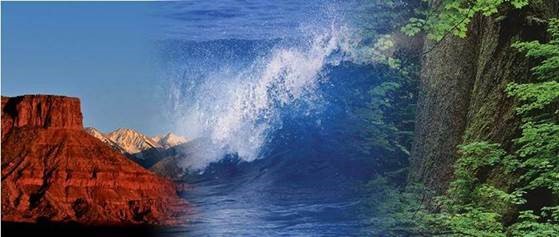
Faculty Publications
ORCID iD
0000-0002-1004-5048
Document Type
Article
Abstract
Summertime carbon, nitrogen, and biogenic silica export was examined using 234Th:238U disequilibria combined with free floating sediment traps and fine scale water column sampling with in situ pumps (ISP) within the Eastern Tropical North Pacific and the Gulf of California. Fine scale ISP sampling provides evidence that in this system, particulate carbon (PC) and particulate nitrogen (PN) concentrations were more rapidly attenuated relative to 234Th activities in small particles compared to large particles, converging to 1–5 µmol dpm−1 by 100 m. Comparison of elemental particle composition, coupled with particle size distribution analysis, suggests that small particles are major contributors to particle flux. While absolute PC and PN export rates were dependent on the method used to obtain the element/234Th ratio, regional trends were consistent across measurement techniques. The highest C fixation rates were associated with diatom‐dominated surface waters. Yet, the highest export efficiencies occurred in picoplankton‐dominated surface waters, where relative concentrations of diazotrophs were also elevated. Our results add to the increasing body of literature that picoplankton‐ and diazotroph‐dominated food webs in subtropical regions can be characterized by enhanced export efficiencies relative to food webs dominated by larger phytoplankton, e.g., diatoms, in low productivity pico/nanoplankton‐dominated regions, where small particles are major contributors to particle export. Findings from this region are compared globally and provide insights into the efficiency of downward particle transport of carbon and associated nutrients in a warmer ocean where picoplankton and diazotrophs may dominate. Therefore, we argue the necessity of collecting multiple particle sizes used to convert 234Th fluxes into carbon or other elemental fluxes, including <50 >µm, since they can play an important role in vertical fluxes, especially in oligotrophic environments. Our results further underscore the necessity of using multiple techniques to quantify particle flux given the uncertainties associated with each collection method.
Digital Object Identifier (DOI)
10.1002/2015GB005134
Publication Info
Published in Global Biogeochemical Cycles, Volume 29, Issue 8, 2015, pages 1309-1332.
Rights
©2015. American Geophysical Union. All Rights Reserved.
APA Citation
Puigcorbé, V., Benitez‐Nelson, C., Masqué, P., Verdeny, E., White, A., & Popp, B. et al. (2015). Small phytoplankton drive high summertime carbon and nutrient export in the Gulf of California and Eastern Tropical North Pacific. Global Biogeochemical Cycles, 29(8), 1309-1332. doi: 10.1002/2015gb005134

